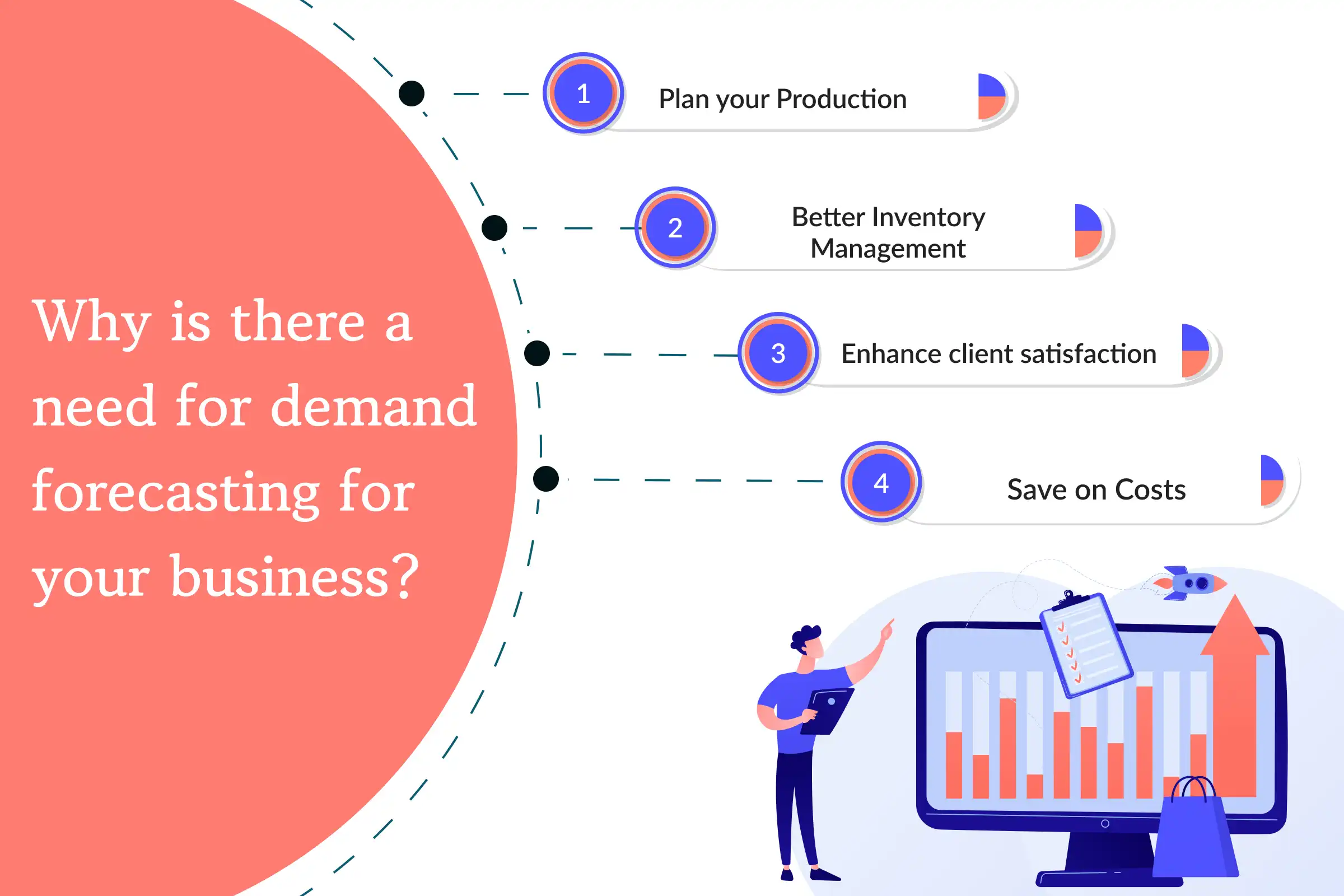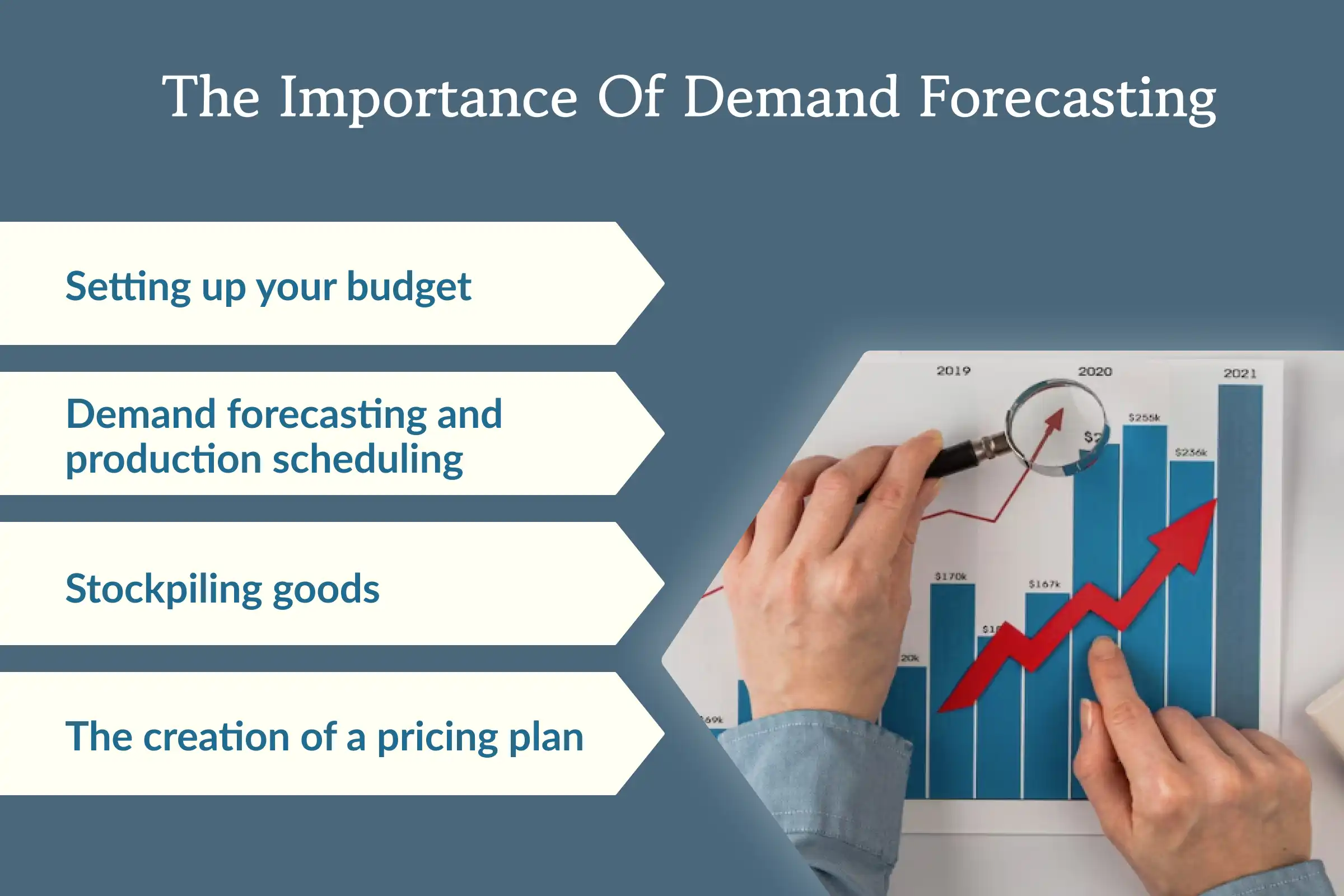How demand forecasting can help grow your business

Demand forecasting enables organizations to enhance inventory management via the anticipation of future sales. Through the examination of past sales data, demand forecasting managers are able to make well-informed business choices pertaining to many aspects such as inventory planning, warehousing requirements, implementation of flash sales, and satisfying consumer demands.
Making predictions about future consumer demand over a specific period is known as demand forecasting, often known as sales forecasting. In addition to other information, it makes use of historical data. Businesses have significant information about their prospects in the current market and other markets when forecasting is properly applied, enabling managers to make wise decisions regarding corporate growth plans, pricing, & market potential.
Gain insights into the future trajectory of your company via the use of demand forecasting techniques. This article provides a comprehensive analysis of demand forecasting and offers insights into effective implementation strategies of businesses.
Why is there a need for demand forecasting for your business?

The use of precise ai based demand forecasting significantly contributes to the optimisation of diverse corporate activities. The ability to predict demand provides significant benefits to several operational processes, including production and delivery. It is possible to effectively organise all essential components of a supply chain in order to ensure seamless operations without encountering any bottlenecks.
It is indeed a crucial activity for businesses for a variety of reasons, including:

● Plan your Production
Businesses can use sales forecasting to plan, define objectives, and develop budgets. It is simple to create and inform a procurement plan to make sure your supplier matches consumer demand, at the individual product level, if you have a strong idea of what your potential future sales may entail.
● Better Inventory Management
Organizations can cut holding costs, improve their inventory levels, and boost inventory turnover rates. Once you have determined the specific goods that will be needed and the corresponding timeframes, you may proceed to appropriately stock your inventory. By using this approach, one may effectively limit the storage of just essential items, resulting in reduced inventory holding time for the products.
● Enhance client satisfaction
In addition to promptly meeting consumer requests, it is also possible to strategically determine the appropriate safety stock in the event of sudden increases in demand. Ensuring the availability of your items to meet client demand is crucial for maintaining customer satisfaction and fostering loyalty towards your brand.
● Save on Costs
Proficiently managing one's budget is contingent upon a comprehensive understanding of one's financial demands. The use of appropriate inventory management strategies may effectively mitigate the negative impact of stockouts, enabling the preservation of potential sales that would have otherwise been lost.
The importance of demand forecasting

Although there will never be a demand forecast that is 100% accurate, there are actions you can take to shorten production lead times, boost operational effectiveness, save money, introduce new goods, and enhance the customer experience.
● Setting up your budget
Demand forecasting aids in risk mitigation and effective financial decision-making that affects profitability, cash flow, resource allocation, the potential for growth, inventory management, operational costs, staffing, and total expenditure.
● Demand forecasting and production scheduling
By using demand forecasting, you can deliver the goods to your consumers when they need them. Before launch, order fulfillment and marketing must be coordinated to forecast demand.
Being sold out for weeks at a time destroys development (or your reputation) faster. A company can avoid purchasing too little or too much inventory by using proper demand forecasts and inventory control.
● Stockpiling goods
Because warehousing costs increase with the amount of inventory you carry, demand forecasting can save you money on both inventory purchase orders and warehousing. For efficient inventory management, it's critical to keep the ideal stock level on hand. You can simply refill and predict inventory over time by closely monitoring inventory levels.
● The creation of a pricing plan
Demand forecasting should aid in the streamlining of a company's business plan to match demand, which should help in setting product prices. Businesses can expand, create competitive pricing, use the best e-commerce marketing methods, and invest in their development by comprehending the market and prospective opportunities.
Forecasting seasonal variation and other trends
Seasonality describes differences in demand that happen periodically during particular times, such as the Christmas season. On the other hand, trends can emerge at any time and indicate a general change in behavior. To meet market demands, trend projection is crucial, and historical sales data can be useful.
Forecasting sales effectively requires ongoing effort. It's a continuous process that ought to include:
● Actively influencing demand by improving your product offers, sales channels, and customer experience
● Progressively reducing bias and inaccuracy
● Utilizing modern analytics to provide a demand-driven, intelligent response
Sales forecasting is a terrific approach to foresee future consumer demands for your company so you can plan your resources and inventory to meet those demands.
By predicting demand, you may avoid paying holding fees and other operating expenditures when they are not necessary while making sure you have all you need to manage peak periods when they arise.
ML forecasting and conventional forecasting
Businesses have historically relied on statistical forecasting techniques like simple exponential and linear regressions to aid in decision-making. However, in many analytics and data collection initiatives across enterprises and sectors, machine learning-based prediction has supplanted traditional techniques. The implementation of the machine learning prediction model has been sluggish due to storage space constraints and a lack of appropriate data. The development of cloud computing increased the use of ML forecasting across various businesses.
Machine learning forecasting
A method for obtaining information and patterns from vast volumes of data is called machine learning (ML). Machine learning can be used to forecast financial results, anticipate market supply, demand, and inventory, and boost business performance. To calculate demand, supply, and stock, ML analyzes previous data. It can then predict future demand, supply, and inventory.

The benefits listed below will guide you in the right direction:
Unmetered Bandwidth: Machine-based forecast integrates big data, cloud computing, and learning algorithms to allow the assessment of millions of pieces of information while simultaneously taking into account an infinite number of demand elements.
A Classier Reach: Machine learning prediction makes use of so-called pattern identification using a diverse range of algorithms that can adapt to all data and are appropriate for many different demand form types.
Higher Accuracy Level: The forecast is more precise thanks to machine-based analysis, which uses more data. The projection will comprise points like product components, packaging, raw material valuation, third-party fiscal data, and other identifying details that can be tallied.
The various factors that make AI forecasting necessary in today's supply chain include handling tons of data, having to react quickly to market demands, having a shorter PLC, and so forth. Demand forecasting using Al/ML supports throughout, increasing customer happiness, revenue increases, and inventory reduction.
Companies can utilize machines to learn models to enhance their current demand forecasting techniques because of the incremental benefits of ML. It is essential to embrace technology and move past conventional demand forecasting techniques.
Conclusion
Demand forecasting assists companies in making well-informed decisions that impact everything from supply chain management to inventory planning. Businesses want a strategy to accurately estimate demand because client expectations are changing more quickly than ever. All you have to do is pick the right tool, and it will forecast future sales of your business. By doing this, you will also gain a better grasp of your company and the best techniques to employ to boost your revenues.
Learn more about how Thousense AI enables you to replace stock and provide the customer experience needed if you're searching for an e-commerce fulfillment solution to assist you in improving demand forecasts. Schedule a Demo today to see how Thousense can help you forecast demand and take your business to the next level.